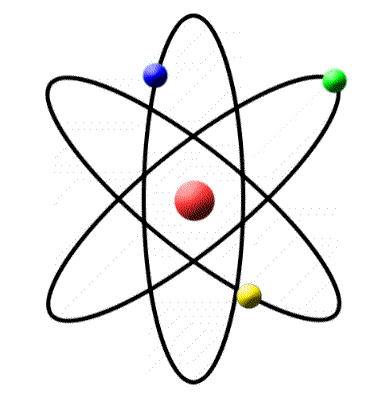The energy levels of an atom is shown in figure:

Which one of these transitions will result in the emission of a photon of wavelength $1241\, nm$ ? Given $\left( h =6.62 \times 10^{-34} Js \right)$

Which one of these transitions will result in the emission of a photon of wavelength $1241\, nm$ ? Given $\left( h =6.62 \times 10^{-34} Js \right)$
- D
- B
- A
- $C$
The Correct Option is A
Approach Solution - 1
Approach Solution -2
\( c \) is the speed of light,
and \( \Delta E \) is the energy difference.
Calculating \( \Delta E \) for each transition:
$\Delta E_A = 2.2 \text{ eV}$
$\Delta E_B = 5.2 \text{ eV}$
$\Delta E_C = 3 \text{ eV}$
$\Delta E_D = 10 \text{ eV}$
$\lambda_A = \frac{6.62 \times 10^{-34} \times 3 \times 10^8}{2.2 \times 1.6 \times 10^{-19}}$
$= \frac{12.41 \times 10^{-7}}{2.2} \text{ m}$
$= \frac{1241}{2.2} \text{ nm} = 564 \text{ nm}$
$\lambda_B = \frac{1241}{5.2} \text{ nm} = 238.65 \text{ nm}$
$\lambda_C = \frac{1241}{3} \text{ nm} = 413.66 \text{ nm}$
$\lambda_D = \frac{1241}{10} = 124.1 \text{ nm}$ This matches the given wavelength for transition \( D \).
Top Questions on Atoms
- Prove that, in the Bohr model of the hydrogen atom, the time period of revolution of an electron in the \( n \)-th orbit is proportional to \( n^3 \).
- The distance of closest approach of an alpha particle from a nucleus when the alpha particle moves towards a nucleus with a kinetic energy 'E' is 'x'. The distance of closest approach when the alpha particle approaches the same nucleus with kinetic energy 0.4E is
- The ratio of frequencies of second line of Lyman series and third line of Balmer series of hydrogen atom is:
- The ratio of wavelengths of second line in Balmer series and the first line in Lyman series of hydrogen atom is
- Describe the atomic model of Rutherford. How did Bohr model removed its drawbacks?
Questions Asked in JEE Main exam
For a statistical data \( x_1, x_2, \dots, x_{10} \) of 10 values, a student obtained the mean as 5.5 and \[ \sum_{i=1}^{10} x_i^2 = 371. \] He later found that he had noted two values in the data incorrectly as 4 and 5, instead of the correct values 6 and 8, respectively.
The variance of the corrected data is:- JEE Main - 2025
- Mean and Variance of Random variables
- Let the line \( x + y = 1 \) meet the circle \( x^2 + y^2 = 4 \) at the points A and B. If the line perpendicular to AB and passing through the midpoint of the chord AB intersects the circle at C and D, then the area of the quadrilateral ABCD is equal to:
- JEE Main - 2025
- Coordinate Geometry
- A person measures mass of 3 different particles as 435.42 g, 226.3 g and 0.125 g. According to the rules for arithmetic operations with significant figures, the additions of the masses of 3 particles will be.
- JEE Main - 2025
- Units and measurement
- A force of 49 N acts tangentially at the highest point of a sphere (solid of mass 20 kg) kept on a rough horizontal plane. If the sphere rolls without slipping, then the acceleration of the center of the sphere is:
- JEE Main - 2025
- Quantum Mechanics
- Two equal sides of an isosceles triangle are along \( -x + 2y = 4 \) and \( x + y = 4 \). If \( m \) is the slope of its third side, then the sum of all possible distinct values of \( m \) is:
- JEE Main - 2025
- 3D Geometry
Concepts Used:
Atoms
- The smallest unit of matter indivisible by chemical means is known as an atom.
- The fundamental building block of a chemical element.
- The smallest possible unit of an element that still has all the chemical properties of that element.
- An atom is consisting of a nucleus surrounded by one or more shells of electrons.
- Word origin: from the Greek word atomos, which means uncuttable, something that cannot be divided further.
All matter we encounter in everyday life consists of smallest units called atoms – the air we breath consists of a wildly careening crowd of little groups of atoms, my computer’s keyboard of a tangle of atom chains, the metal surface it rests on is a crystal lattice of atoms. All the variety of matter consists of less than hundred species of atoms (in other words: less than a hundred different chemical elements).

Every atom consists of an nucleus surrounded by a cloud of electrons. Nearly all of the atom’s mass is concentrated in its nucleus, while the structure of the electron cloud determines how the atom can bind to other atoms (in other words: its chemical properties). Every chemical element can be defined via a characteristic number of protons in its nucleus. Atoms that have lost some of their usual number of electrons are called ions. Atoms are extremely small (typical diameters are in the region of tenths of a billionth of a metre = 10-10 metres), and to describe their properties and behaviour, one has to resort to quantum theory.